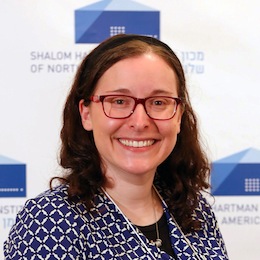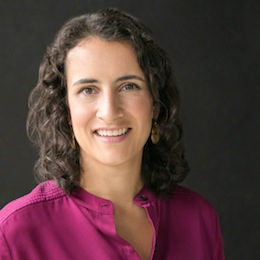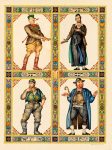Mattathias and the Apostate (1 Maccabees 2:1-25) in Gustave Doré’s English Bible 1866. The time has not yet come when we no longer need the warrior Maccabee. (photo from Wikimedia Commons)
Before the rebirth of the modern state of Israel and the unprecedented success of Jews in North America, Jews had very little to celebrate. After our triumphant Exodus from Egypt, it was more or less downhill and, in the competition between monotheistic faiths, we were always on the losing side. The God who chose us, to quote Woody Allen, was a consistent “underachiever,” at least when it came to looking after our interests.
One of the few exceptions in this tragic tale was Chanukah. For a moment, we won. Who we defeated and what we achieved are debated though. Were the Maccabees fighting a foreign, occupying force that wanted to deny the Jewish people their freedom and liberty, or was the war essentially a battle against Hellenization and assimilation? Was the miracle the military victory or a spiritual one? Before the 20th century, it didn’t really matter. We had won at something. Dayenu. The light of Chanukah illuminated the darkness that engulfed much of Jewish history, and gave hope that, one day, we would again prevail.
That hope came true in the 20th century, and both Israel and North American Judaism embraced Chanukah as the paradigm for their success. Each, however, tells a very different Chanukah tale and sees itself as combating a very different darkness.
Now, differences alone are not a problem, as long as they complement each other. In the case of Chanukah, however, these differences express a deep schism between Israel and North American Jewry. It is not hyperbolic to argue that, unless we learn how to share a Chanukah story, our shared enterprise and common identity are at risk.
In Israel, Chanukah is primarily a story of our military victory over an oppressive enemy that sought to destroy us. Zionists who wanted to re-form the Jewish psyche and heal it from its diasporic defeatism and powerlessness saw the foundation for the new Jew in the Maccabees of old – a Jew who was brave, a Jew who was willing to bear arms and, most significantly, a Jew who was victorious.
The Maccabean victory of the few over the many continues to serve as a dominant theme in Israeli discourse. In our experience, we continue to encounter forces of darkness who seek to destroy us. We are the light that they yearn to extinguish and, as we celebrate Chanukah, we recommit ourselves to the heroism and sacrifice that our survival requires and demands. If, in the past, our tradition commanded every Jew to see themselves as coming out of Egypt, in modern Israeli society, the demand is that every Jew commits himself or herself to being a modern Maccabee.
In North America, a very different Chanukah story is told. As paragons of religious tolerance, the United States and Canada have created an unprecedented environment for Jews to live and thrive as a powerful and beloved minority. There is no war of survival. Consequently, North American Jews have little personal use for the warrior Maccabee.
Through the North American lens, Chanukah celebrates the constitutional rights of all to religious freedom and to the fostering of religious tolerance. The war of the Maccabees was a battle against religious oppression, and the Maccabees were liberal warriors against the darkness of religious oppression and fundamentalism. Through the chanukiyah, which stands proudly side-by-side with the Christmas tree, Jews pledge to lead the fight to preserve the religious freedoms of liberal democratic life. The Chanukah light is the torch leading their way.
The beauty of religious symbols is that they have no inherent meaning, and the history on which they stand is but raw material to be molded by each generation and community in search of meaning and relevance. People in different times and circumstances will inevitably develop diverse understandings. The problem arises when these differences become expressions of value systems that are positioned as mutually exclusive.
A community is a collection of individuals who do not merely share common symbols. A strong and vibrant worldwide Jewish community is only possible if we share as well a set of common values. For North American and Israeli Jews to walk hand-in-hand, we cannot be alienated from each other’s values, but, quite to the contrary, we must respect and seek to embody them. In short, we must not only light the same candles, but strive to illuminate and overcome the same darkness.
Israelis must begin to fight against the darkness of religious intolerance. Religious freedom must be the foundation of Israel’s democracy, and Israelis must cease to vote primarily for the Maccabean leader who will lead us to victory against external foes, and instead seek a Maccabee who is devoted to creating a Jewish society where all forms of Judaism and all religions are supported and treated with equal respect. No North American Jew will in the long run have a relationship with Israel that does not strive to embody these values.
At the same time, the generation of North American Jews for whom the survival and power of Israel are a given, must learn to recognize and respect the real threats and dangers that their people in Israel experience every day. The time has not yet come when we no longer need the warrior Maccabee. While we share the same values of justice and peace, in the realities of the Middle East, their implementation is challenging at best. Israelis will not feel connected to a North American Jewry that does not appreciate the complexity of this reality.
As a people, we share the same Chanukah. To be a united people, we must learn how to share each other’s stories, share each other’s needs and values, and together fight to embody them in our lives.
Rabbi Dr. Donniel Hartman is president of the Shalom Hartman Institute and author of the 2016 book Putting God Second: How to Save Religion from Itself. This article was initially posted on the Times of Israel in 2015. Articles by Hartman and other institute scholars can be found at shalomhartman.org.






